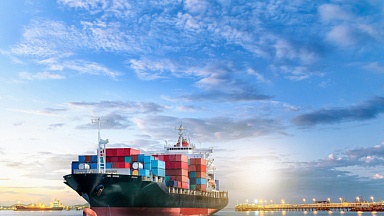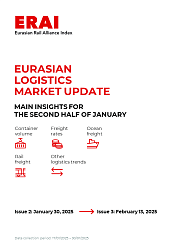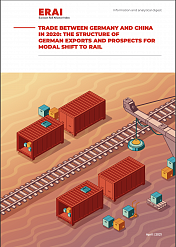Designing logistics corridors that bypass traditional maritime chokepoints — such as the Suez Canal and Southern Corridors — has become a strategic necessity. Current priorities increasingly focus on developing the multimodal North-South Corridor and Northern Sea Route, which are capable of ensuring stable and accelerated delivery times between Russia, the Middle East, the Global South, and Asia.
|
Route |
Freight Volume in 2023−2024 |
Forecast until 2030−2035 |
|
North-South ITC (Eastern Branch) |
1.8−2 |
30−35 |
|
North-South ITC (Overall) |
11.6 |
60−100 |
|
Northern Sea Route |
36−38 |
80 |
The data above illustrates the rapid growth in freight volumes along these corridors, particularly the eastern branch of the North-South ITC, as a whole, and the Northern Sea Route.
However, achieving these targets requires systematic efforts to remove existing constraints and pre-emptively resolve a range of challenges.
Insufficient logistics infrastructure capacity
A persistent issue for transport routes, such as the North-South International Transport Corridor and the Northern Sea Route, is the limited infrastructure capacity. Constraints include inadequate transhipment capacity, railway bottlenecks, insufficient port depths, and seasonal operational disruptions, especially in the North during winter. These factors significantly reduce corridor efficiency. Furthermore, synchronisation is lacking in infrastructure development across state borders; transhipment points on the Caspian Sea and ports in Iran and southern Russia require significant modernisation. Congestion at hubs like Astrakhan, Olya, and Anzali causes downtime and increased costs. There is an urgent need to develop port, rail, and road infrastructure; expand bonded zones and terminals; and reinforce the winter icebreaker fleet on the Northern Sea Route.
Digital solutions and the absence of a unified logistics interface
International routes face heterogeneity in documentation standards, tracking, cargo clearance, and customs rules. The absence of a unified digital platform among participating countries leads to delays, functional duplication, and rising transaction costs. Moreover, insufficient automation of logistics processes hinders the ability to adapt to changes in demand and schedules. International transport corridors require a unified digital route management system — akin to a digital «single window» — integrating customs and logistics services into cross-border platforms. Examples of successful implementations include Tez Customs in Central Asia and digital corridor projects between India and Russia.
Competition and route duplication without coordination
The simultaneous development of multiple transport directions — such as the eastern and western branches of the North-South ITC, the Trans-Caspian Route, and the Northern Sea Route — poses the risk of investment duplication and cargo flow dilution. A lack of integration between projects diminishes the overall efficiency of the logistics network and impedes the establishment of unified standards. There is a requirement to establish coordinating consortia; allocate functions among routes according to specialisation; integrate all routes into a single transport map for the EAEU and BRICS; and rely on intergovernmental operators and joint management of transport hubs.



